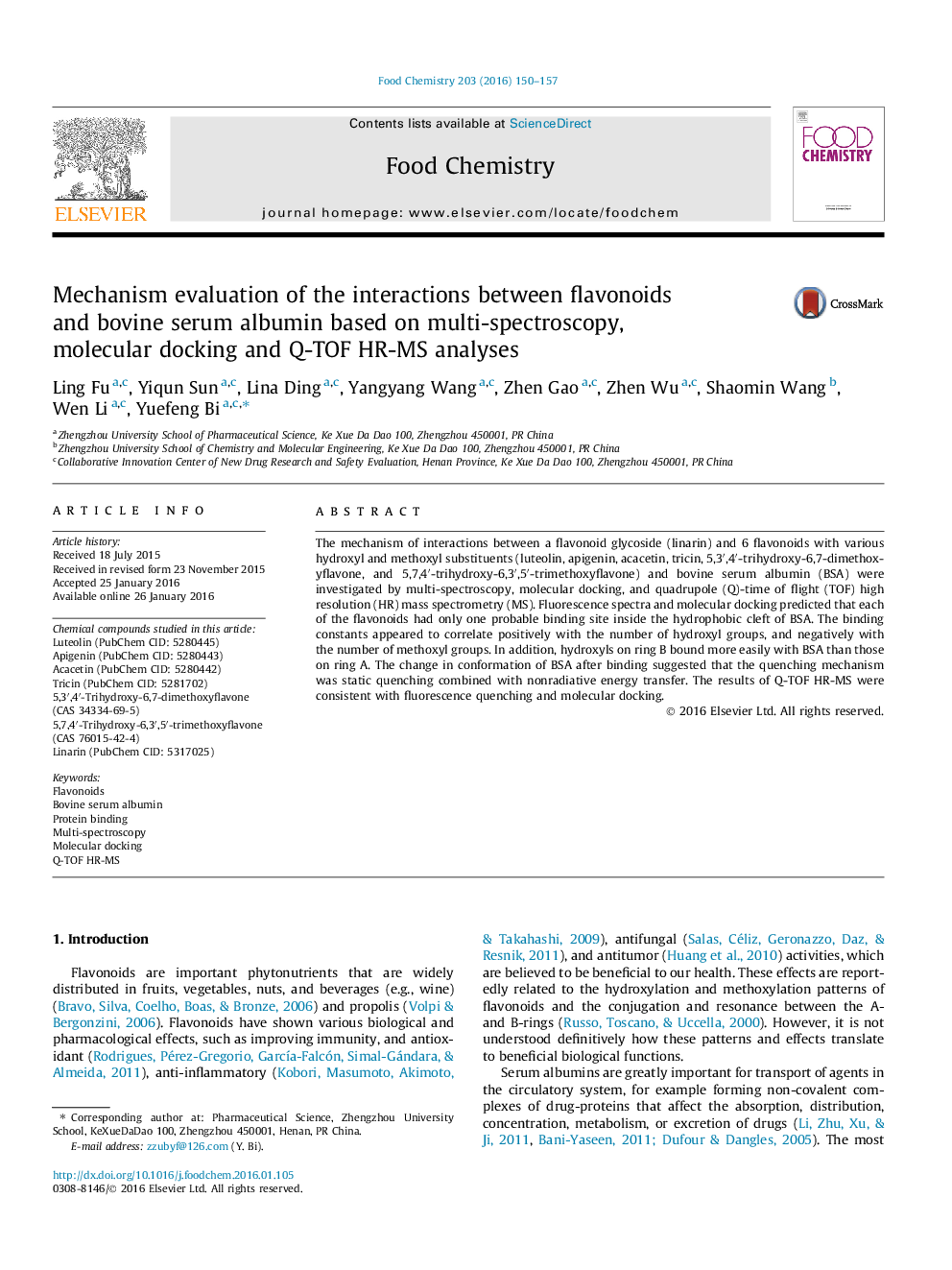| Article ID | Journal | Published Year | Pages | File Type |
|---|---|---|---|---|
| 7588944 | Food Chemistry | 2016 | 8 Pages |
Abstract
The mechanism of interactions between a flavonoid glycoside (linarin) and 6 flavonoids with various hydroxyl and methoxyl substituents (luteolin, apigenin, acacetin, tricin, 5,3â²,4â²-trihydroxy-6,7-dimethoxyflavone, and 5,7,4â²-trihydroxy-6,3â²,5â²-trimethoxyflavone) and bovine serum albumin (BSA) were investigated by multi-spectroscopy, molecular docking, and quadrupole (Q)-time of flight (TOF) high resolution (HR) mass spectrometry (MS). Fluorescence spectra and molecular docking predicted that each of the flavonoids had only one probable binding site inside the hydrophobic cleft of BSA. The binding constants appeared to correlate positively with the number of hydroxyl groups, and negatively with the number of methoxyl groups. In addition, hydroxyls on ring B bound more easily with BSA than those on ring A. The change in conformation of BSA after binding suggested that the quenching mechanism was static quenching combined with nonradiative energy transfer. The results of Q-TOF HR-MS were consistent with fluorescence quenching and molecular docking.
Keywords
Related Topics
Physical Sciences and Engineering
Chemistry
Analytical Chemistry
Authors
Ling Fu, Yiqun Sun, Lina Ding, Yangyang Wang, Zhen Gao, Zhen Wu, Shaomin Wang, Wen Li, Yuefeng Bi,
